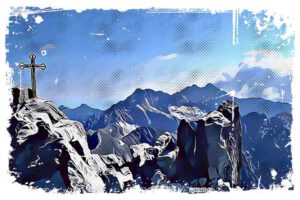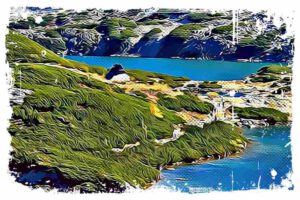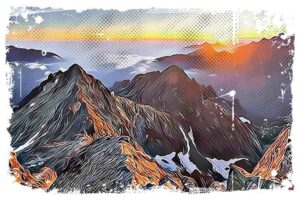If you’re looking for some amazing Tatra trails, I’ve got you covered! I am sure you’ll love these 20 suggestions that we’ve carefully prepared for you. Some of these trails are simpler and take you through valleys, while others are a bit more challenging and involve climbing ridges. As I’ve hiked many of them myself, I am sure you can do it as well.

I think these routes will bring back some great memories for those who’ve been to the Tatra Mountains before. Most of these trails are in the Polish Tatras, but we’ve also included a few from the Slovak side to encourage you to explore that area too.
I can tell you, it’s always a good idea to check the weather in advance and be prepared for anything when heading out on these trails. Don’t forget to bring provisions, water, and insurance if you’re going to the Slovak Tatras.
1. Chochołowska Valley
I am sure you’ll enjoy exploring the Chocholowska Valley located in the Western Tatras. It is the longest and largest valley in the Polish Tatras, covering an area of over 35 km² and stretching about 10 km. The green trail that leads through this valley offers a pleasant and not very tiring walk. At the end of the trail, you’ll find the charming Polana Chocholowska and a shelter where you can enjoy the famous apple pie.
↳ Before you head to Tatra Park, I highly recommend reading my complete guide to Tatra Mountains. I showcase the most scenic places you won't want to miss. Make sure to check it out, so you don't overlook anything interesting: Tatra Mountains – An Insider’s Guide to All Attractions and Info
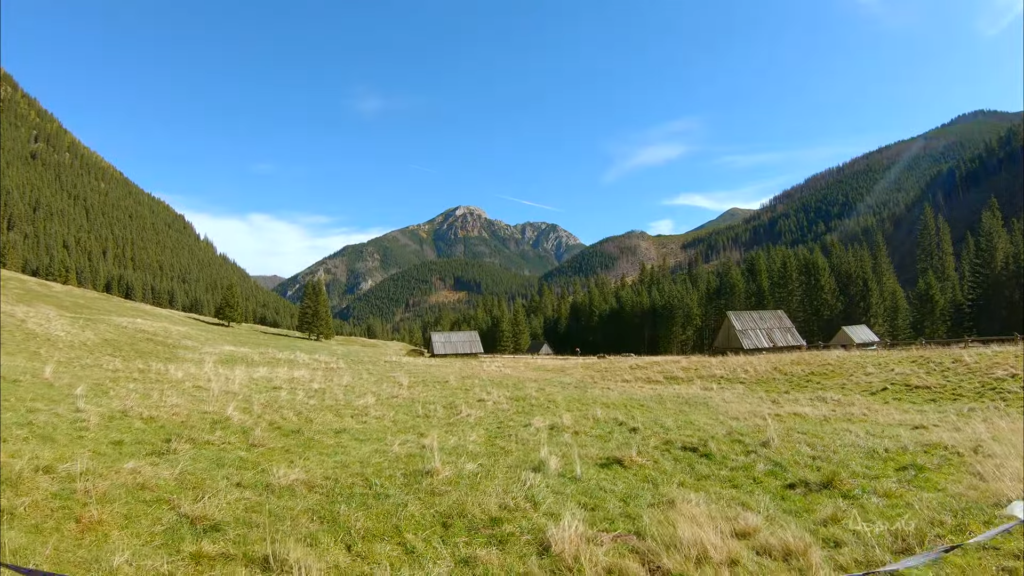
It is worth to say that the Chocholowska Valley is one of the few places in the Polish Tatra Mountains where you can bring your dog or ride a bike on the trail. Expect the walk from the car park at Siwa Polana to the shelter in Polana Chocholowska to take a little over 2 hours.
If you want more adventure, I recommend climbing to the top of Grzes. The trail from the shelter to the summit takes about 1h 45 minutes, offering a stunning panorama of Wolowiec, Slovak Rohace, and the impressive Starorobocianski Wierch.
2. Kościelisko Valley
If you need more reasons to visit the Tatra Mountains, the Koscielisko Valley should be on your list. It is the second-largest valley in the Polish Tatras, just after Chocholowska Valley, and one of the most visited areas in the region. I believe it’s no surprise, as the number of attractions and natural beauty here is truly impressive!
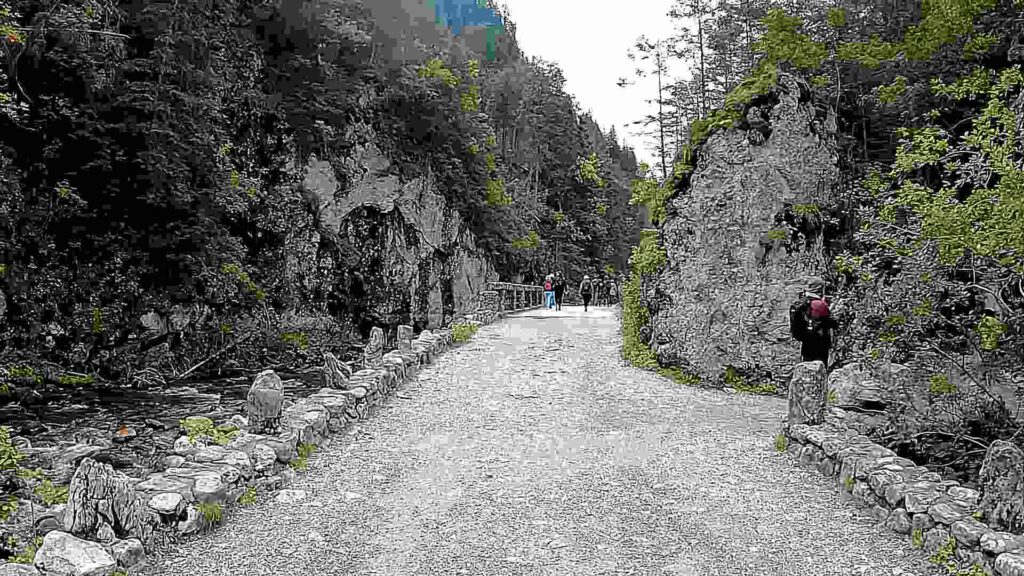
A green trail leads through the valley, taking you to the Shelter on Hala Ornak in about 1.5 hours. However, if you take the time to explore along the way, it might take you a bit longer. Some interesting spots include Mrozna Cave, Hala Stoly, and the Gorge of Krakow, where you can walk through the Dragon’s Den (Smocza Jama). Don’t forget about the Mylna Cave (Jaskinia Mylna) and the Pawlikowski Windows (Okna Pawlikowskiego) as well.
After resting at the shelter and enjoying the view of Bystra, you can take a bonus walk to the peaceful Smreczynski Pond, which is about a 30-minute walk on the black trails. If you’re up for a challenge, you can try the arduous ascent to Czerwone Wierchy / Red Peaks and their first peak, the „Ciemniak„.
I know the Koscielisko Valley, along with all its attractions, is an excellent idea for a relaxed or intense day in the Tatra Mountains.
3. Czerwone Wierchy / Red Peaks
Czerwony Wierchy is made up of four peaks: Ciemniak, Krzesanica, Małołączniak, and Kopa Kondracka, all rising above 2,000 meters above sea level. Known as one of the most beautiful routes in the Tatras, the trail offers stunning panoramas and views without any significant difficulties.
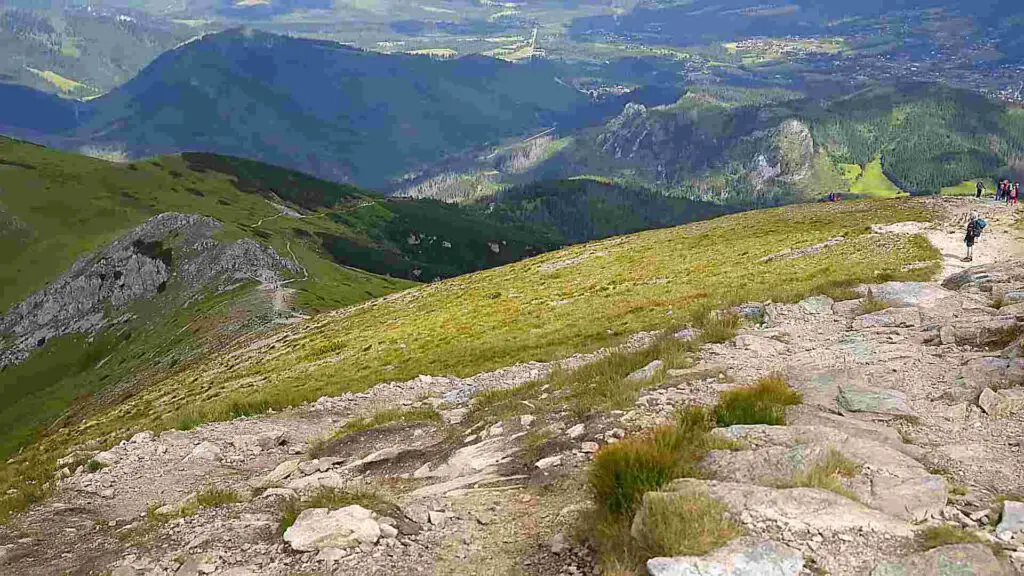
The sight ranges from the Belianske Tatras, through the High Tatras, to the ends of the Western Tatras. You can choose from different variants depending on your fitness level, but if you’re up for a longer Tatra hike, start your trip in the Kościeliska Valley and follow the ridge. If you still have energy at the end, you can add Giewont to your plan.
Another option is to take the cable car to Kasprowy Wierch, traverse all the mentioned peaks, and descend to Kir (Kościeliska Valley), avoiding a significant elevation gain. The section from Kasprowy Wierch through Goryczkowe Czuby to Kopa Kondracka is particularly charming. Red Peaks (Czerwone Wierchy) is most popular in autumn when the plant „skucina” turns red, giving the area its name.
4. The Valley of „Mała Łąka” and „Wielka Polana Małołącka„
The enchanting Mała Łąki Valley is located in the Western Tatras, between the Kościeliska Valley and the Bystra Valley. Reach the beautiful Wielka Polana Małołącka in about an hour from the parking lot, following an easy trail. This spot offers a perfect view, a bench, and plenty of space on the grass to relax and take in the atmosphere.
From here, you can see Czerwone Wierchy, Giewont, and Mały Giewont. The longest and deepest Polish cave, the Wielka Śnieżna Cave, is found in the „underground” of the Mała Łąki Valley. Wielka Polana Małołącka was created in the area of a former glacial lake, which has since filled with denudation sediments.
5. Giewont – Tatra Sleeping Knight
The Giewont massif overlooks the city of Zakopane, tempting newcomers from the moment they arrive. It is located between the Bystra Valley, the Kondratowa Valley, the Mała Łąki Valley, and the Strążyska Valley. Several trails lead to Giewont, with a common final section featuring one-way traffic and chains for assistance. The Giewont massif comprises three parts: Great Giewont (1,894 m above sea level), Small Giewont (1,739 m above sea level), and Long Giewont (1,868 m above sea level).
A 15-meter steel cross stands on Giewont, installed by parishioners from Zakopane in 1901. Be aware that Giewont is particularly dangerous during storms due to frequent lightning strikes. A recommended trip involves taking the red trail through the Strążyska Valley, where you can see the figure of the Sleeping Knight, the Siklawica waterfall, and continuing through Grzybowiec.
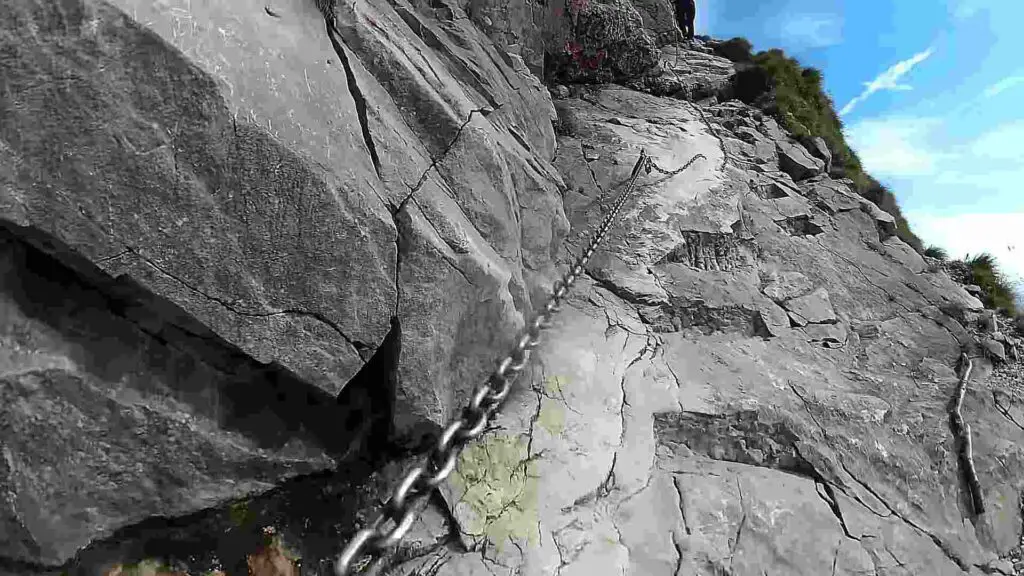
After tackling the chains and taking some photos, descend towards the Shelter on Hala Kondratowa and continue through Kalatówki to Kuźnice. The trip should take just over 6 hours, but be prepared for long queues at the chains during peak season.
- I suggest you read this fascinating story on how the cross turned to be deadly: Unbelievable Story Behind Giewont Peak’s Cross: Zakopane’s Tatra Icon
Consider Adventurous Trails With Guides
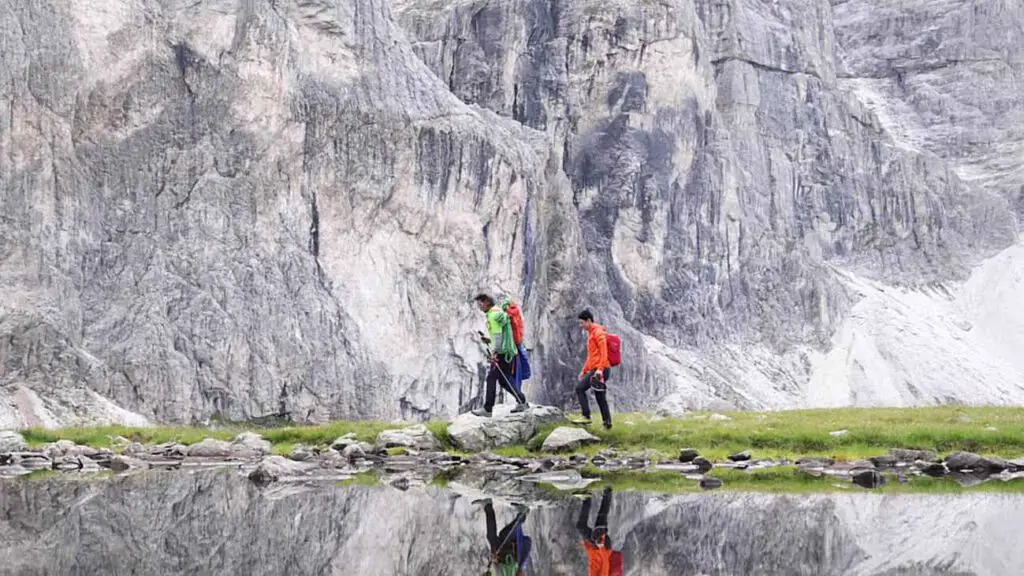
Check the best local guide by clicking this link.
As you venture through these paths, I’m confident you’ll like the comfort and safety a guide can offer. Your guide will ensure you stay on route and uncover hidden parts of Tatras that you may not otherwise stumble upon.
See your guide as your storyteller, sharing interesting information about the world around you. This certainly making the trip more fun and enjoyable, right?
If you’re into local history and culture, we’ve got you sorted. While you explore, our well-informed guide will share engaging and fun facts about the locale. It’s a unique blend of both learning and having an adventure.
Sometimes if it’s worth hiring a local tatra guide because he will also take care of yout safety in Tatra Mountains.
↳ Book more adventurous guided tours in Tatra Mountains by clicking here!
6. The Strążyska Valley and Sarnia Skała – A Charming View of Giewont
The Strążyska Valley is one of the most visited valleys in the Tatras, located in the Western Tatras on the outskirts of Zakopane, between Dolina ku Dziurze Valley and Dolina za Bramką Valley. The valley stretches for about 3 km and is perfect for a walk with children, even those in a stroller. It takes approximately 40 minutes to reach Polana Strążyska, where a seasonal teahouse, Parzenica, awaits. Benches and tables are available, but it’s worth going a little further, just 10 minutes, to reach the charming Siklawica waterfall, which features two cascades with a total height of 23 meters.
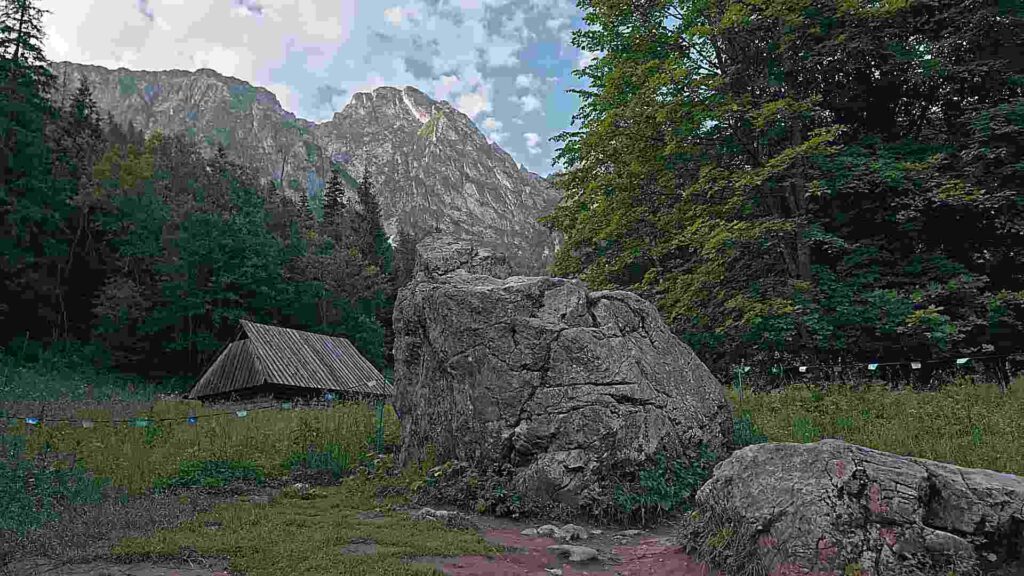
From the Siklawica waterfall in the Strążyska Valley, I highly recommend ascending to Sarnia Skała via the black trail, which takes about 50 minutes. Sarnia Skała stands at 1,377 meters above sea level and was once called Mała Świnica or Świnia Skała. From its summit, you can admire beautiful views of Giewont, Zakopane, and even Babia Góra. If you still have energy, consider heading towards Kalatówki.
7. Nosal – Surprisingly Scenic Tatra Peak
Nosal is a mountain peak in the Western Tatras, rising above Kuźnice and situated between the Bystra Valley and the Olczyska Valley. From the northwest side, the rocks resemble a nose, which explains the mountain’s name.
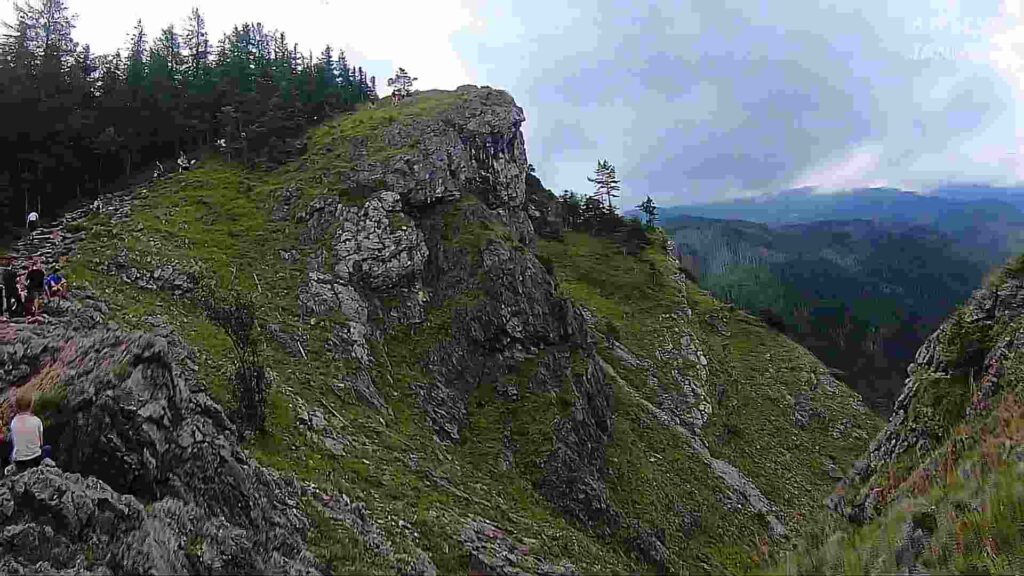
It takes about 45 minutes to reach the summit from the road leading to Kuźnice, and the views from Nosal are incredibly interesting. You can see Świnica, Kasprowy Wierch, Red Wierchy, and Giewont. Nosal is particularly enchanting at sunset. We recommend returning through the Nosalowa Pass to Kuźnice.
8. Hala Gąsienicowa and Czarny Staw Gąsienicowy
Don’t miss the opportunity to enjoy an apple pie at the Murowaniec shelter in Hala Gąsienicowa. From Kuźnice, you can choose between two trails: the blue trail, which steadily gains elevation through Boczań, and the yellow trail, which runs through the Jaworzynka Valley and gains elevation towards the end.
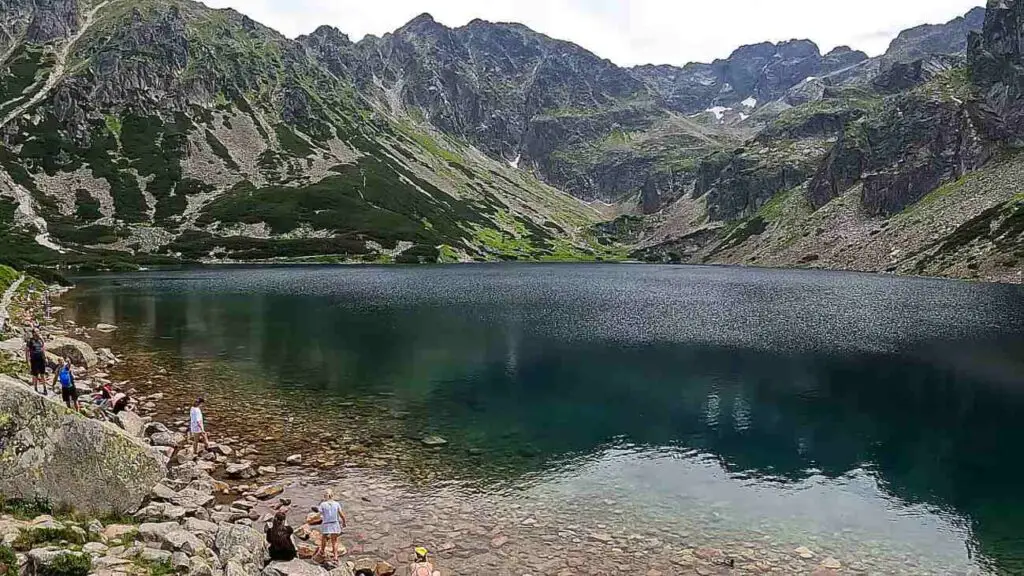
Both trails take roughly the same amount of time and converge at the Między Kopami Pass before leading to Hala Gąsienicowa. If you’re hiking with children, especially during winter, we recommend the black trail from Brzeziny through Psia Trawka in the Dry Gąsienicowa Valley, which is perfect for a sled ride.
Hala Gąsienicowa, named after the local Gąsienica family who owned the land in the 17th century, is home to the large Murowaniec hostel. This area serves as an ideal starting point for challenging and interesting Tatra excursions, such as Granaty, Świnica, Kościelec, or Zawrat and further to Orla Perć.
If you’re not planning any difficult routes, consider visiting Black Pond, where the reflection of Tatra giants in the water enchants visitors. To the right of Black Pond, 533 meters above its surface, stands Kościelec.
9. Kościelec Peak
Kościelec, in the High Tatras, captivates everyone visiting Hala Gąsienicowa. Its location in the side Ridge of Kościelców, extending from Zawrat Turnia and dividing Dolina Gąsienicowa into Czarna and Zielona, gives it a striking appearance. The peak’s name likely derives from its church tower-like silhouette. To reach the summit, follow the black trail from the Karb Pass.
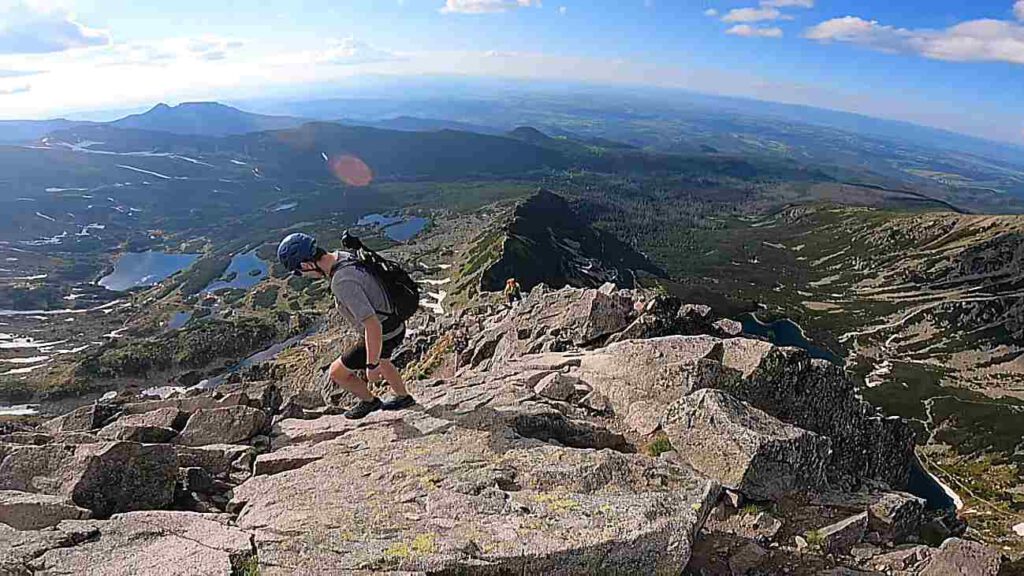
While no chains or buckles are present, the trail requires some climbing in a few places. The most challenging section is right below the summit, but the panoramic views of Orla Perć, Świnica, Kasprowy Wierch, and all Gąsienicowe Ponds make it worthwhile. It takes about 2 hours to reach the top from the Murowaniec Hostel.
10. Orla Perć – The Most Difficult Tatra Trail
Orla Perć is the longest ridge trail in the High Tatras, stretching between Zawrat and Krzyżne Passes. It’s the most challenging trail in the entire Tatra Mountains, with no other section rivaling its intensity or difficulty. Numerous chains, buckles, elevations, and exposure accompany hikers for nearly 6.5 hours along the trail, from Zawrat Pass through Kozi Wierch, Zadni Granat, Po Średnio Granat, Skrajny Granat, and finally to Krzyżne Pass.
A full-day trip along Orla Perć is a demanding adventure that lasts several hours, so if you plan to complete it in one day, consider staying overnight at the Murowaniec shelter or in the Valley of Five Ponds. Also, note that the section from Zawrat to Kozi Wierch is one-way.
For those who don’t feel up to completing the entire Orla Perć in one day, there are several trails leading to Orla Perć from both the Valley of Five Ponds and Hala Gąsienicowa. This allows you to break the trail into smaller sections, with the most popular divisions being Zawrat to Granaty and Granat to Krzyżne.
During the busy season, it’s best to start early, as queues can form at the chains and more challenging points. We also recommend wearing a helmet due to the risk of falling rocks. In 1932, the trail was shortened when the Polish Tatra Society closed the section from Krzyżne Pass to Polana near Wołoszyn for nature conservation reasons.
11. Świnica – the Tatra Queen
Świnica, the first prominent peak in the main ridge of the High Tatras from the west, boasts two peaks separated by the Świnicka Pass and Szczerbina Niżnia. The higher peak reaches an altitude of 2302 meters above sea level, accessible by the red tourist trail. The lower Taternicki peak, at 2291 meters above sea level, is off-limits to tourists.
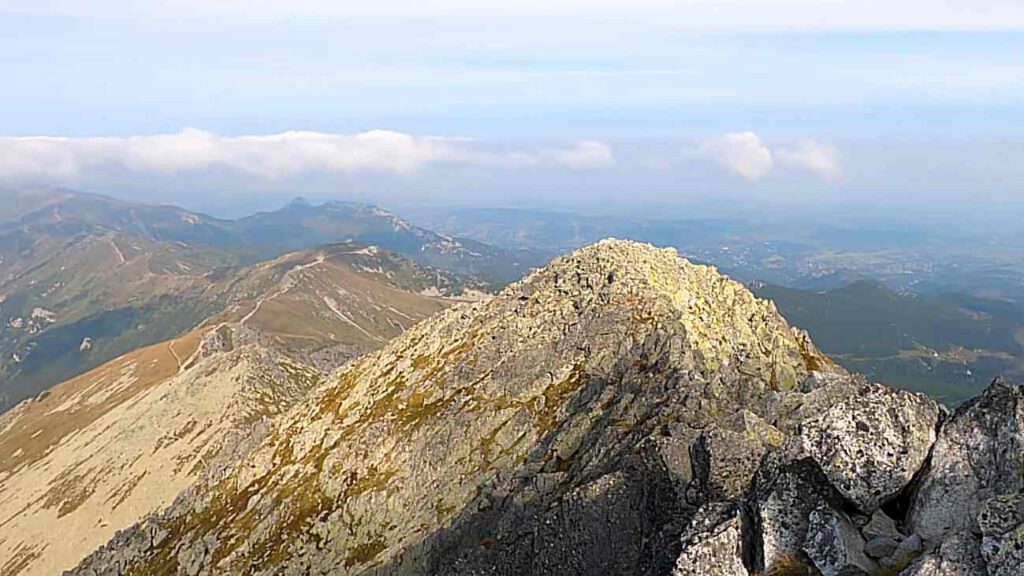
Świnica’s distinctive wide pyramid shape draws crowds during peak season, and it offers stunning views of both the High and Western Tatras. Overlooking the Gąsienicowa Valley with Hala Gąsienicowa, the Five Polish Ponds Valley, and the Cicha Valley in Slovakia, Świnica is a must-visit destination.
The trail to Świnica features exposure, chains, and buckles. Due to a rockfall on the Blue Turnia, the section from Świnica to Zawrat is closed, leaving the only route to the peak via Świnicka Przełęcz, accessible from the Liliowe Pass and Kasprowy Peak (2h).
Kasprowy Wierch can be reached by cable car or via the black trail straight from Murowaniec hostel in Hala Gąsienicowa (3h). Like Giewont, Świnica’s isolated location makes it a prime spot for lightning strikes, so exercise caution during storms. The trail to Świnica is among the most popular in the Tatra Mountains.
12. Rusinowa Polana and Goose Neck (Gęsia Szyja)
A visit to Rusinowa Glade (Polana) is essential, whether you prefer ridge hikes or valley walks. This easily accessible mountain glade in the Tatras offers stunning panoramas of the Belianske and High Tatras, including the highest peak, Gerlach, as well as Rysy, Ice, Lamb’s Peak, and Hawran in Bielsko. Numerous benches allow you to soak in the breathtaking views for an extended period.
While at Rusinowa Polana, don’t miss the nearby Sanctuary of Our Lady of Jaworzyńska in Wiktorówki, adorned with plaques commemorating those who never returned from the mountains. Another worthwhile destination is Gęsia Szyja, reachable from Rusinowa Polana in 50 minutes.
Despite its modest elevation of 1489 meters above sea level, Gęsia Szyja offers a stunning panorama, described by Tytus Chałubiński as a „view of 100 peaks and passes”. Follow the green trail to reach the Murowaniec shelter in Dolina Gąsienicowa, the enchanting Dolina Pańszczyzna, and further to Krzyżne and Orla Perć.
13. The Valley of Five Polish Ponds
The Valley of Five Polish Ponds in the High Tatras is a breathtaking and unique destination. This stunning, 4 km long, high-mountain post-glacial valley captivates visitors despite the challenging 770-meter ascent to reach the hut. From the parking lot in Palenica Białczańska, the trek to the Valley of Five Ponds takes about 3 hours.
The Siklawa waterfall, Poland’s largest at 65 meters high, is a standout feature of the journey to the Valley of Five Ponds. Separating the Valley of Five Polish Ponds from the Roztoka Valley, the waterfall is just 20 minutes from the shelter at Przedni Staw. Numerous trails traverse the valley, with easy access to Orla Perć or Morskie Oko.
In the first case, trails lead directly to Zawrat, Kozia Przełęcz, Kozi Wierch, or Krzyżne. In the second case, you have a choice between two routes to Morskie Oko: the blue trail through Świstówka or the yellow trail through Szpiglasowa Przełęcz.
14. Szpiglasowy Peak
Szpiglasowy Wierch might just be the most beautiful peak in the Tatras, and let me say, it’s a sight to behold! This amazing spot gives you the chance to take in three stunning valleys – the Valley of Five Ponds, Morskie Oko, and Dolina Ciemnoreczyńska, which lies on the Slovak side of the Tatra Mountains.
Standing tall at 2172 meters above sea level, Szpiglasowy Wierch is a part of the main ridge of the Tatra Mountains. If you’re looking for an adventure, the trails leading from Morskie Oko and the Valley of Five Ponds meet at Szpiglasowa Pass, just below the peak. I think it’s worth mentioning that the trail from the Valley of Five Ponds has some short and relatively simple chains, making it a great introduction to climbing with iron in the mountains.
The entire loop through Morskie Oko and the Valley of Five Ponds should take you about 9.5 hours. Trust me, it’s worth every minute! On your way down to Morskie Oko, you’ll even have the opportunity to get a closer look at the Monk.
15. Morskie Oko – The Enchanting Fish Pond
You can’t talk about the Tatras without mentioning the classic Morskie Oko. It’s the largest lake in the Tatras, nestled at the foot of the stunning Mięguszowieckie Peaks. Although the 8-kilometer trail leading to Morskie Oko can be crowded during the season, I am convinced that if you visit just after the peak season, you’ll find it absolutely charming.
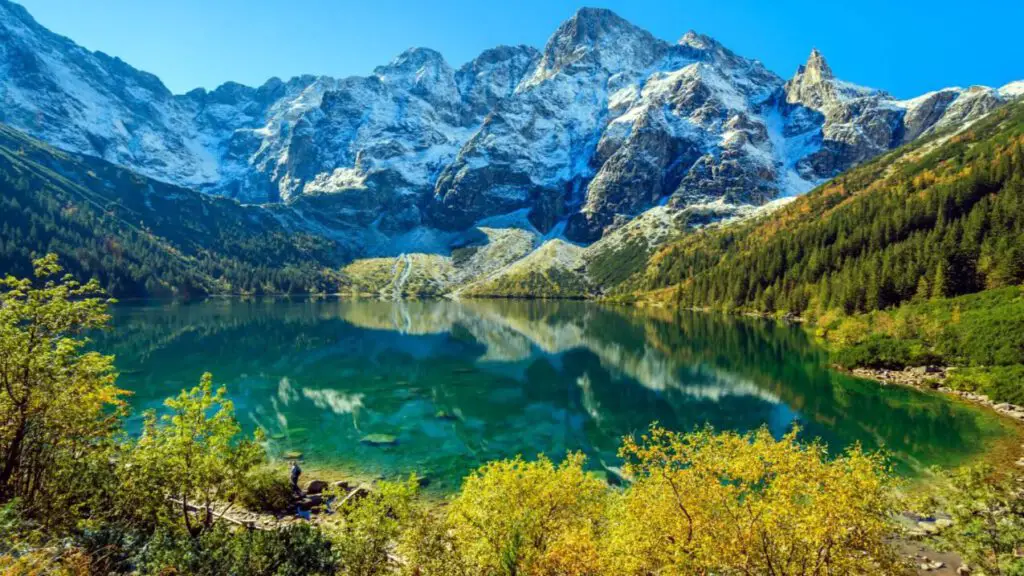
Just so you know, you’ll need to book a parking space at Palenica Białczańska through the internet. While you’re at Morskie Oko, you’ll find yourself surrounded by the beautiful green waters of the lake, which is home to various fish species. It’s also one of the few Tatra lakes stocked naturally with fish.
If you want to take your adventure up a notch, you can hike to the highest peak in Poland, Rysy, from Morskie Oko. You can also explore the Valley of Five Ponds in two different ways, either through Szpiglasowa Przełęcz or Świstówka. The trail to Morskie Oko should take you about 2 hours one way, and along the way, you’ll be treated to the mesmerizing sights of Mickiewicz Waterfalls and the breathtaking view from Polana Włosienica.
16. Rysy – Conquering Poland’s Highest Peak
If you’re up for a challenge, a trip to Rysy (2249 meters above sea level) is definitely worth considering. It’s a demanding route, especially in terms of fitness, as you’ll need to tackle over 1220 meters of elevation gain from Morskie Oko. After about an hour, you’ll reach Czarny Staw pod Rysami, and from there, the real ascent begins.
As you climb higher, don’t forget to look back and take in the magnificent views of the Black Pond and Morskie Oko. You’ll encounter some insured sections, which aren’t too difficult when the rock is dry and snow-free. The hardest part comes just before the summit, where you’ll need to overcome a slightly exposed section.
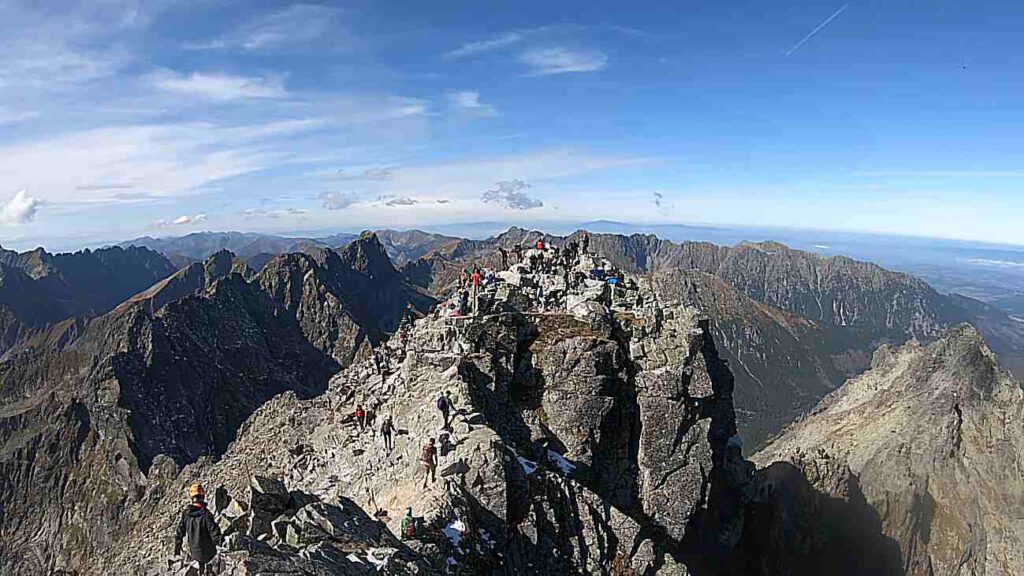
Once you’ve conquered Rysy, you’ll be standing on the highest peak of the Tatra Mountains on the Polish side. The summit actually consists of three peaks, and you’ll be on the middle and border one. The taller peak is just a few meters away, and I believe it’s worth getting closer to it. And the panorama? It’s one of the most breathtaking in the Tatra Mountains! It’s so hypnotic that you’ll want to stay there forever.
If you’re feeling adventurous, you can try climbing Rysy from the Polish side, then descend to the Slovak shelter under the Vah, and further down through Żabia Dolina. This route is absolutely magical! However, keep in mind the logistics aspect, as returning to the Polish side can be quite time-consuming. If you’re interested, you can find more information in our blog post about Rysy.
17. Wide Pass in the Belianske Tatras
The Belianske Tatras might not have a dense network of tourist trails, but trust me, it’s worth visiting this incredible place. Imagine slowly climbing the Wide Pass and witnessing the High Tatras from an entirely different perspective. I can tell you, it’s a view that will leave you speechless. Unfortunately, the trail leading to the highest peak of the Belianske Tatras, Hawran, and Placzliwa Skała, is currently closed.
At the pass, you’ll face a tough decision: should you choose the trail leading through the Zadnich Koperszadów Valley or opt for a longer return variant through the Green Pond Shelter? If you visit the shelter, you might want to know it’s an excellent starting point for a trip to Lamb’s Peak. Remember, there are no wrong decisions here; just make sure you plan your return to your car.
18. Czerwona Ławka (Red Bench), Slovakia’s Most Difficult Trail
If you’re a seasoned hiker, the Red Bench, connecting two beautiful valleys – the Valley of Five Spiskie Ponds and the Staroleśna Valley – is perfect for you. On one hand, the trail’s elevation is quite steep, and on the other, the Red Bench is adorned with chains and buckles, making it a demanding climb. It might not be as difficult as Orla Perć, but it’s no piece of cake either.
During your hike, you’ll pass the famous Slovak shelter of Tery’s Chata (the highest shelter in the Tatra Mountains open year-round) and enjoy stunning views of the Staroleśna Valley. Many consider this valley one of the most beautiful in the entire Tatra Mountains, especially when viewed from the Sławkowski Peak.
19. Koprowy Peak and Kriváň
When it comes to breathtaking scenic peaks on the Slovak side of the Tatra Mountains, Koprowy Wierch is one of the top choices. Located at the heart of the Tatra Mountains, Koprowy Wierch stands 2,363 m above sea level. The trail isn’t too challenging, and the Hińczowa Valley looks truly mesmerizing in the early morning hours.
Another exceptional peak is Kriváň, the national mountain of Slovakia. Standing at 2,495 m above sea level, Kriváň offers an amazing view of the mountain landscape. The trail is relatively easy, and you can complete a nice loop in about 7.5 hours. Keep in mind that it takes around 1.5 hours to reach the trail from Zakopane by car, so plan accordingly.
21. Conquer the Western Tatras – Rohacze and Banikov
In my opinion, the most challenging marked Tatra trail on the Slovak side is Rohacze and Banikov in the Western Tatras. The trail doesn’t have the same intensity as Orla Perć, but it’s still heart-pounding. The red ridge trail runs beautifully through this area, starting in Wołowiec and moving westwards through Ostry Rohacz, Łazyczny, up to Smutna Przełęcz, and further through Trzy Kopy to Banikov. The ridge section takes about 5 hours, while the entire loop takes around 11.5 hours. Some people choose to divide Rohacze into two parts, with the midpoint being Smutna Pass.
Conclusion
As you can see, the Tatra Mountains have something for everyone. Don’t forget to plan ahead and check the weather conditions before setting out on your adventure. I can tell you that the Tatra Mountains can be unpredictable, so it’s always best to be prepared. And remember, whether you’re tackling the most difficult trail in Slovakia or just enjoying a leisurely stroll in Poland, the most important thing is to respect nature and have fun.
Now that you have an idea of some of the amazing trails and peaks waiting for you in the Tatra Mountains, it’s time to pack your bags, lace up your hiking boots, and hit the trails. I am convinced that once you experience the beauty and charm of this extraordinary region, you’ll understand why it’s a favorite destination for outdoor enthusiasts from around the world.
References:
- https://pl.wikipedia.org/wiki/Tatry
- https://www.polskietatry.pl/
- https://www.polska.travel/pl/wypoczywaj/w-gorach/tatry

